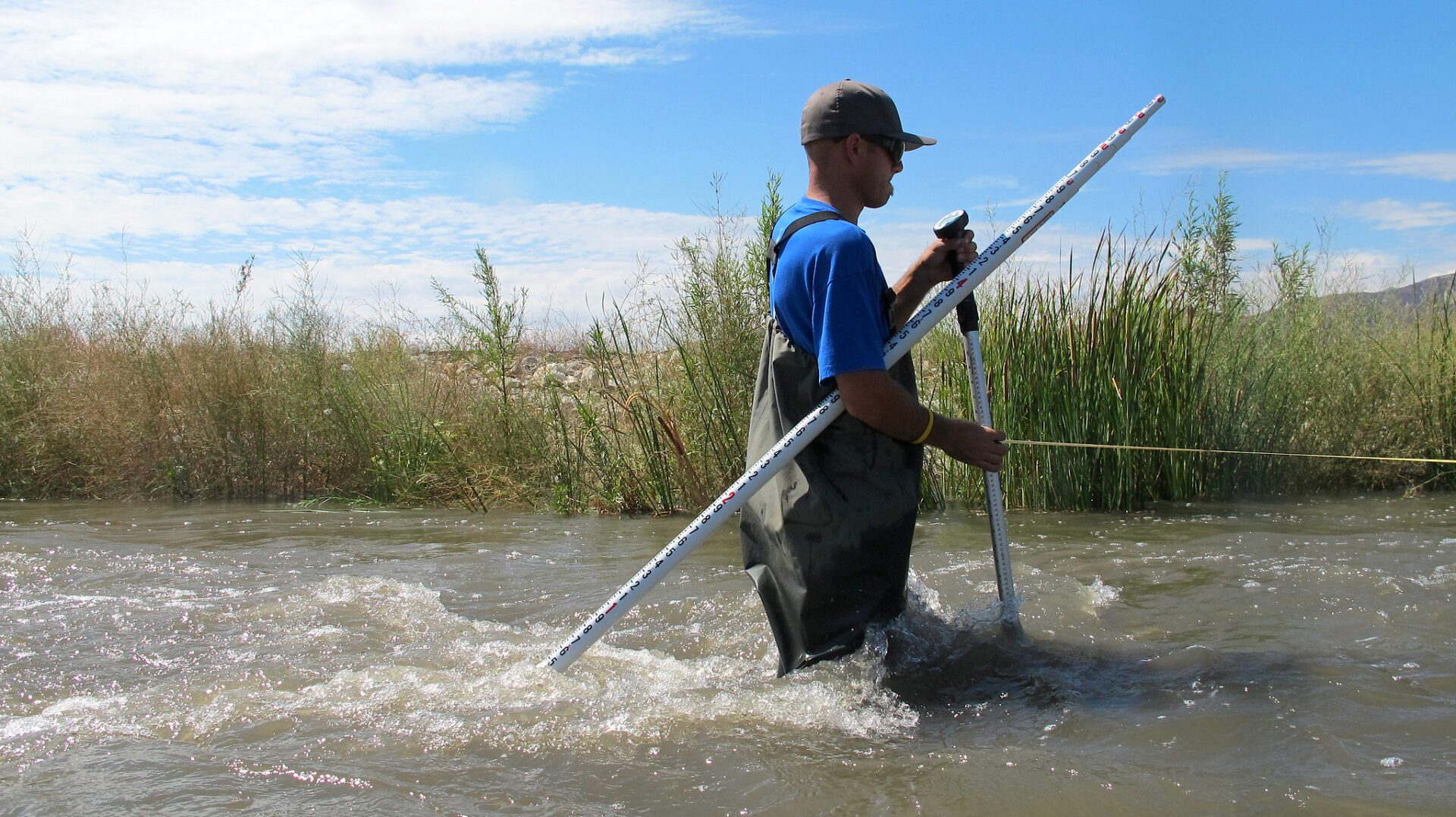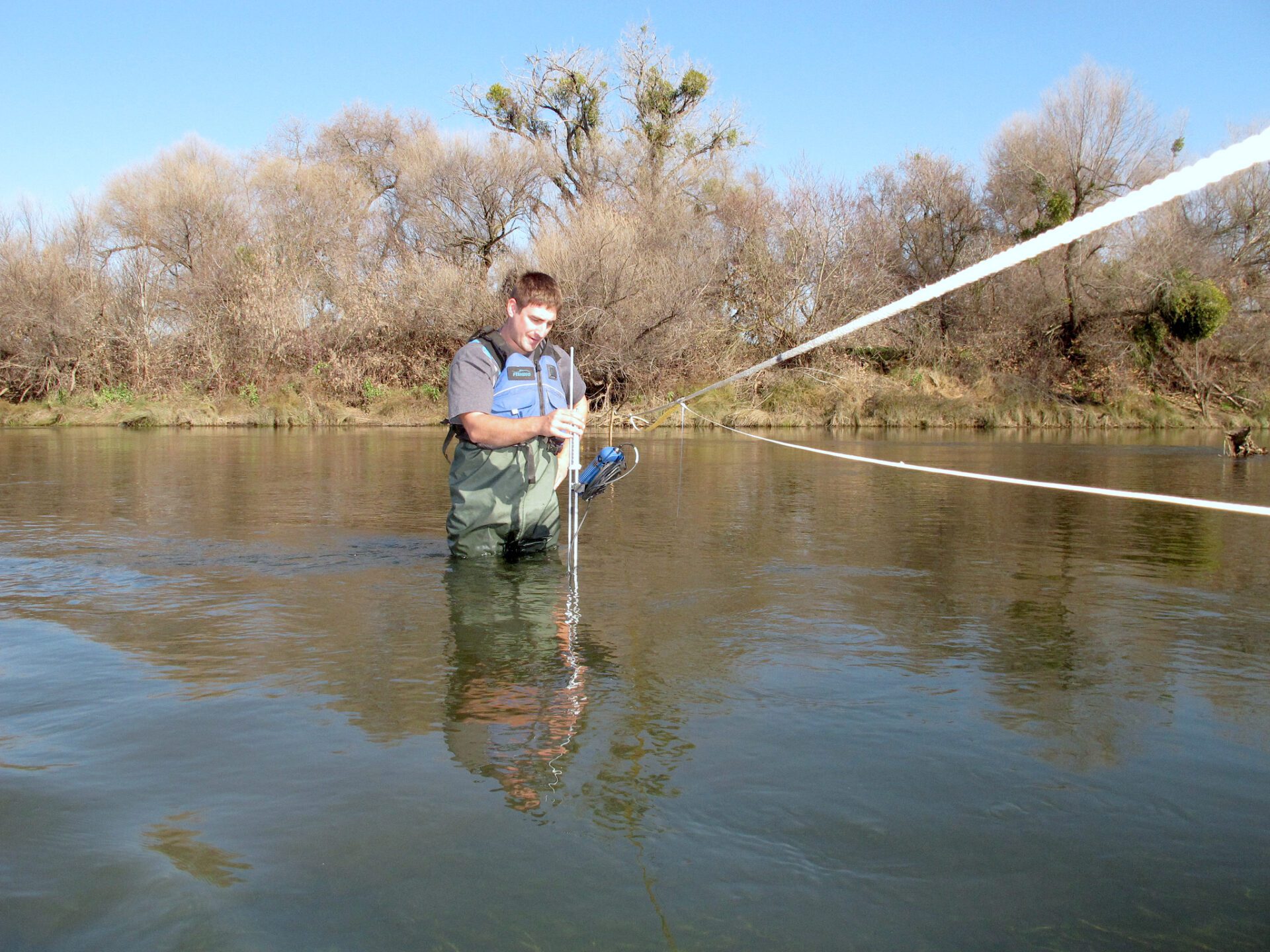Wednesday February 19, 2014
 Characterizing habitat types is an important component of environmental science, and many of our projects require understanding a study site’s geography (see On Point, It’s a Wrap!). To collect this information, we often conduct stream cross sections. We first divide the river into a number of sections that represent the length of the study site, then take depth and velocity measurements at equal distances across the width of the stream in each section. Cross sections allow us to piece together a habitat map based on data collected at different points that represent the habitat as a whole.
Characterizing habitat types is an important component of environmental science, and many of our projects require understanding a study site’s geography (see On Point, It’s a Wrap!). To collect this information, we often conduct stream cross sections. We first divide the river into a number of sections that represent the length of the study site, then take depth and velocity measurements at equal distances across the width of the stream in each section. Cross sections allow us to piece together a habitat map based on data collected at different points that represent the habitat as a whole.
 The technician seen here is taking velocity measurements while out on a redd survey (see Hunt for Redds in October). We take cross sections during redd surveys to get a more detailed look at the environment in which salmon prefer to make their nests. For example, eggs may be less successful at hatching in areas where water velocity is too slow because of poor oxygen exchange and the accumulation of metabolic waste around the eggs (Chapman 1988). On the other hand, adult Chinook salmon are not expected to spawn where the water velocity is too high because the effort needed to fight the current may sap their available energy reserves (Brett 1965). The data collected from a cross section can then be applied to activities like habitat restoration and help create more suitable habitat to meet the needs of both spawning and rearing salmon.
The technician seen here is taking velocity measurements while out on a redd survey (see Hunt for Redds in October). We take cross sections during redd surveys to get a more detailed look at the environment in which salmon prefer to make their nests. For example, eggs may be less successful at hatching in areas where water velocity is too slow because of poor oxygen exchange and the accumulation of metabolic waste around the eggs (Chapman 1988). On the other hand, adult Chinook salmon are not expected to spawn where the water velocity is too high because the effort needed to fight the current may sap their available energy reserves (Brett 1965). The data collected from a cross section can then be applied to activities like habitat restoration and help create more suitable habitat to meet the needs of both spawning and rearing salmon.
